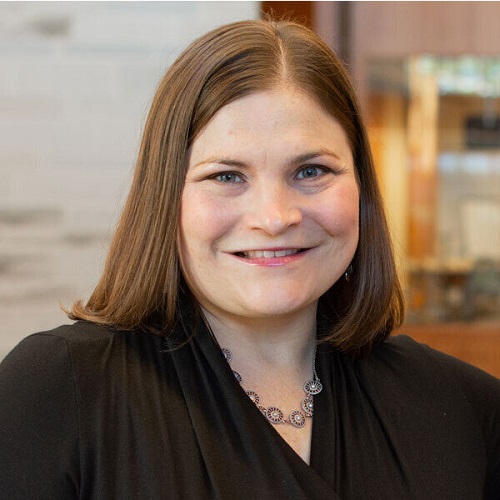Mass trauma is an unfortunate reality for communities in the United States and beyond. Whether due to mass violence, natural disasters, or public health crises, preachers and community leaders are often summoned to speak into the unspeakable. Though trauma threatens to steal language and seeks to silence meaning-makers, preachers are still summoned to “offer a Word” to a community filled with myriad disjointed and sometimes unanswerable questions. While mass trauma impacts communities differently, understanding the nature of the impact might open possibilities for preaching to respond to collective or communal trauma from mass traumatic events.
Though people may toss around the term as an equivalent to struggle, pain, or grief, “trauma” (while it can include struggle, pain, and grief) has a unique capacity to disrupt and disorient people and communities as they are unable to account for or make sense of the traumatic event or experience. In my work, I define trauma as “a blow or wounding of the mind, body, and spirit/self that occurs when a destructive experience or event exceeds a person’s or community’s resources to process or assimilate the experience into preconceived frameworks of understanding.”1
The experience of trauma, which impacts the whole self, is fully embodied and is the subjective experience of an event which lingers beyond the conclusion or subsiding of the event. In fact, many people and communities can’t even begin to conceive of or deal with the depth and breadth of their trauma until after the danger or urgency has subsided.
Perhaps more important for preachers than defining trauma is recognizing the impact trauma has on communities. I suggest that there are dual crises that occur—a crisis of time and a crisis of coherence. First, since the traumatic experience cannot find a home or integrate in the stories that we tell or fit into the ways we understand the world, ourselves, or even God, the traumatic reality becomes a sort of eternal present. As the traumatic reality continually revisits and tries to fit into our narratives, it scrambles the relationship between past, present, and future.
At the same time, there is a crisis of coherence, where the stories we tell about the world, ourselves, our community, and the Holy no longer hang together in helpful, comprehensible, or meaningful ways. The combined crises of time and coherence I have titled narrative fracture—the breaking apart of stories into ragged pieces that no longer fit together in time or in meaningful ways to construct a helpful narrative.
Narrative fracture happens at both the individual and collective level. Collective trauma can show up in a variety of ways. Collective trauma can exist as a pervasive shadow over the community that revisits in unexpected times and ways. Such narrative fracture may disorient communal activities and relationships, as the foundational stories no longer serve in the same way to help shape or secure communal identity. There may be a potential loss of rhythms, traditions, or rituals as helpful or meaningful in the same way. And, there always exists the danger that communal identity or narrative sense will get stuck at the moment of traumatic crisis. At its core, collective trauma has a tendency to pull at communal bonds, often exacerbating unaddressed conflict and inviting increased disconnection as the stories and identity of the community are unsteadied. What, then, can preaching do in the face of collective narrative fracture?
I want to suggest that while preaching works in concert with other sources of community and individual support (in other words, pastoral care, counseling, community outreach, et cetera), preaching is one of the few times we have the opportunity to address the collective. As a result, the preaching event offers a space to name, address, and attend to collective trauma. Though there are many ways preaching may engage these moments, I want to consider five ways our preaching (and worship!) might faithfully respond to the realities of collective trauma.
- First, preaching and liturgy may offer language. As suggested above, one of the sneaky things about trauma is that it resists language. As trauma theologian Serene Jones writes, “When we are overwhelmed, what fails us most profoundly is our capacity to use language.”2 Preachers might offer language for communities to borrow until they can find or claim language for themselves again. This includes offering language describing the broad variety of emotions people in the community might be experiencing, naming what has happened or been lost (including the loss of a sense of safety, innocence, et cetera), and articulating the questions, fears, and hopes swirling around the community.
- Second, the preaching event can cultivate space for honest reflection. So often, communities experiencing mass trauma are quick to want to act and respond (and sometimes are required to do so for their own safety). However, it is important to have space to honestly name and contend with what has happened as well as name where God might be present in the midst. The preaching moment opens space for such reflective work.
- Third, preaching and worship may help facilitate communal connection, support, and empathy. As named above, collective trauma often pulls at the seams of community, seeking to tear communities apart along fault lines of unresolved conflict (now exacerbated by the trauma) and difference in traumatic impact. Preaching and worship may allow for communities to hear one another’s stories as well as cultivate shared language and vision that pushes against the disintegrative forces of collective trauma.
- Fourth, preaching might model faithful traumatic response. The tendency of preachers and community leaders is to want to have all the answers. I have been told by many preachers that they are tentative to say anything, until they are sure they know “exactly the right thing to say.” The problem is, if we wait for the “exact right thing” we may remain silent in the moments when people are begging for a word from the Lord. Instead, I want to suggest that our preaching might serve to model faithful trauma response, including naming what is broken, crying out and lamenting what is lost, asking each other and God hard questions, offering confession, and leaning into the hope and promises of God we trust are still true, even if (sometimes) we aren’t experiencing them yet.
- Fifth, preaching and worship have the capacity to center us in the patterns of our life together and the stories of our faith. In reminding ourselves and one another of the foundational stories of our faith, we are reminded that we are not alone. Not only do we have one another in this moment, but ancestors in the faith who have wrestled with trauma before. Additionally, centering communities in our larger stories of faith resists the temptation for communities to get stuck on the traumatic event as the new foundation of their collective identity and narrative. Instead, these stories of faith are able to remind us who we are beyond and including the traumatic event. After all, we worship a God whose love is shown in a willingness to journey with us through the pain of the world and whose genuine hope always exists in the shadow of a cross.
Notes
- Kimberly Wagner, Fractured Ground: Preaching in the Wake of Mass Trauma (Louisville, KY: Westminster John Knox Press, 2023), 38.
- Serene Jones, Trauma and Grace: Theology in a Ruptured World, 2nd ed. (Louisville, KY: Westminster John Knox Press, 2019), 29.

